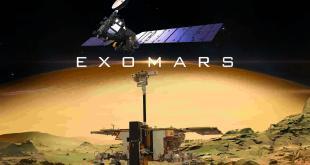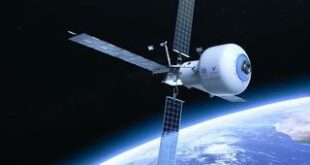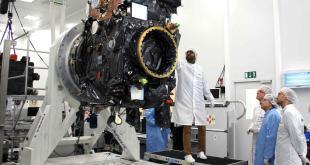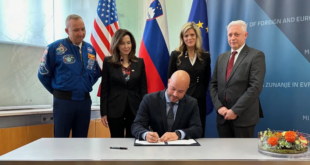 As part of the partnership between SpaceWatch.Global and the European Space Policy Institute, we have been granted permission to publish selected articles and briefs. This is ESPI Briefs No. 39: ‘High Altitude Platform Stations (HAPS): which perspectives for the space sector?’, originally published in March 2020.
As part of the partnership between SpaceWatch.Global and the European Space Policy Institute, we have been granted permission to publish selected articles and briefs. This is ESPI Briefs No. 39: ‘High Altitude Platform Stations (HAPS): which perspectives for the space sector?’, originally published in March 2020.
1. What is a HAPS?
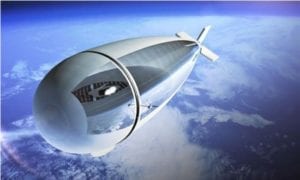
According to the International Telecommunications Union, HAPS are “stations located on an object at an altitude of 20-50 kilometres and at a specified, nominal, fixed point relative to the Earth”. HAPS fly in the stratosphere, above the altitude of commercial aircraft and violent winds. Currently, three main technologies are developed: airships (e.g. Thales Alenia Space’s Stratobus); balloons (e.g. like those used by Loon); and drones (e.g. Airbus Defence & Space’s Zephyr S).
Missions performed by HAPS are comparable to satellite missions. At the moment, they focus mainly on telecommunications and remote sensing. For instance, they seem particularly relevant for disaster management and defence missions.
However, a technological paradox appears: HAPS may be thought to be easier to build than satellites but no technological breakthrough has been reported in this domain in decades while satellites have been flown and permanently improved since the 1960s. This is due to the major technological challenges associated to the HAPS (e.g. developing a long lasting light gas-tight enclosure; performing long- duration flights), which have only recently started to be overcome with the maturation of key technologies: the miniaturisation of avionics; the creation of high-performance solar cells, lightweight batteries and harness; together with the miniaturisation of payloads’ technology, i.e. Earth observation sensors and high-bandwidth communications systems.
2. The current dynamism of the HAPS sector
The HAPS sector develops with some features that are in many respects comparable to the dynamics observed in the so-called “New Space” sector, for instance with the entry of non-historical actors such as IT firms. Thus, one of the most advanced companies at the moment is Loon, a subsidiary of Alphabet (Google’s mother company). Loon already provided telecommunications services after disasters in Peru and Puerto Rico, and signed in 2018 a partnership with Telkom Kenya to provide coverage over an area of 5000 square kilometres. The balloons were launched in summer 2019 and the company obtained regulatory approval in March 2020 to start its mission. Loon is also at the centre of the HAPS Alliance, which was founded in February 2020. Its objectives are to lobby for the uptake of HAPS solutions, promote the creation of a cooperative ecosystem, and influence emerging commercial standards. Among the twelve members, two come from the space sector: Airbus Defence & Space and Intelsat.
Indeed, some space actors have gained interest in HAPS; this is especially the case of the European manufacturers Airbus and Thales, which are both elaborating their own concepts. Thales Alenia Space’ Stratobus is a 5-ton airship with a lifespan of five years in the stratosphere, which can provide services in a radius of 200 km. In January 2020, the French defence procurement agency granted a contract to TAS and Thales to assess whether the Stratobus platform can perform intelligence, surveillance and reconnaissance missions responding to the operational needs of the armed forces. The two companies will design an operational concept study and build a full-scale demonstrator. This contract illustrates the growing interest of military actors in this technology, which meets some of their specific requirements. In the same time, the European Union also launched initiatives on HAPS from a defence perspective. A tender was thus issued under the EDIDP, the precursor of the upcoming European Defence Fund. HAPS are presented there as a solution for the Union’s defence, especially for the surveillance of maritime zones, land borders or critical assets.
ESA has also taken steps regarding this technology. It has for example funded a feasibility study, supported by the European Maritime Safety Agency, Frontex and the EU Satellite Centre, to identify and analyse technically and economically sustainable applications and services relying on HAPS. Along these lines, ESA stressed the complementarity between this technology and the communication, navigation and remote sensing services provided by satellites.
Several initiatives are thus going on, which seem promising once a few caveats have been overcome. First, despite the dynamism of this sector, very few operational services have for the moment been actually delivered and most of the platforms are still in their development phase, struggling for funding and for establishing new partnerships along the supply chain. Second, the value chain of this market is unclear: it is hard to know who will operate and exploit the systems, or which form the delivery of services will take. Nevertheless, the current growing interest for HAPS raises one question: are these services complementing or competing with satellite solutions?
3. The value proposal of HAPS compared to satellites’ one
On top of delivering the same services as space systems, HAPS create specific benefits that make them serious competitors to satellites: they are cheaper (especially for their deployment); more flexible (possibility of maintenance, deployment in only a few hours, repositionability); and quite efficient given their lower altitude (i.e. for observation, they offer better resolution and permanent overview of an area; for communications, there is no latency, customers on the move are more easily served, ground antennas are smaller). Therefore, HAPS can reply to specific needs that are not met by satellites.
Given these benefits, the magnitude to which the development of this sector might impact the space value chain is difficult to assess.
On the one hand:
- The dedicated regional scope of HAPS complements the global coverage of satellites,
- HAPS can be used as a relay between a satellite and a ground station, to facilitate the transfer of data or reduce the ground and space infrastructure,
- HAPS may accelerate the development of space technologies through early, high-altitude flight testing.
On the other hand:
- The rise of these systems increases the competition for spectrum (e.g. at WRC-19, ITU members agreed to identify more radio frequency bands for HAPS) and creates risk of interference (e.g. with Earth observation systems operating in an adjacent band)
- HAPS appear as potential competitors for mega-constellations, at least in delimitated areas, as they are positioned on the same markets, i.e. providing connectivity to remote areas, enabling the Internet of Things (an application promoted by the HAPS Alliance)…
Partnerships of terrestrial operators with HAPS companies allow them to provide satellite-like services, thus increasing competition for traditional GEO operators
Given its likely impact on the space sector and its potential for business, can European actors afford to ignore this market? At the moment, a split between European manufacturers and operators can be identified. Manufacturers are well positioned and promote the development of these systems. This position should be encouraged if it allows them to diversify their portfolio and to offer new services. However, European operators should also clarify their stance regarding this technology, while they currently seem rather silent. If HAPS fully become a competitor of space and open new opportunities for terrestrial operators, it will negatively impact their business and, ultimately, the manufacturers. This situation would be detrimental to all actors of the space landscape.
Rights reserved – this publication is reproduced with permission from ESPI. “Source: ESPI “ESPI Briefs” No. 39, March 2019. All rights reserved”
For more articles please visit ESPI website (www.espi.or.at).


